Roadtrip / Portugal
A matter of taste
Portugal’s Algarve is blighted by mass tourism but entrepreneurs are leading a quality-focused rethink. We plot a course to meet them.
Much of coastal Algarve, particularly heading west between Faro and Lagos, has been geared towards crass mass tourism, from the upmarket resorts frequented by footballers to the low-cost thrills of Albufeira. But veer eastwards or inland, and time your visit for winter or spring, and you’ll soon see that sea and golf are far from the region’s best attractions – and that there’s more on the menu than a full English. Our weekend roadtrip takes in the tastiest producers who have come to call this region home.
Day one
Faro to Castro Marim
Faro has long been seen as a town to drive straight past. It’s the commercial and administrative centre of the Algarve but little more. But if you arrive in time for lunch visit A Venda, a small restaurant nestled on a quiet sidestreet in Faro’s old town. It serves up petiscos, the Portuguese take on tapas, and on our visit, there’s a typical Algarvian spread of clams sautéed in garlic and coriander, dried tuna served thinly sliced with a tomato salad and a delicate orange-flavoured crème caramel.
Vasco Prudêncio and Ana Fonseca are the chefs behind the restaurant – and it’s no coincidence that they’ve settled here. “Faro has changed drastically in the past few years,” says Fonseca. “Ten years ago visitors went straight to a resort that served the kind of food they ate at home and where everyone spoke English,” she adds, without judgement. “It was like England with better weather. A Venda is an example of how that has changed: the people who come here now are people who want to really experience the food and culture of the Algarve rather than the UK.”
Suitably sated, we chart a course east to Monterosa, an olive-oil-maker. The farm has 20 hectares of olive trees and is striving for organic certification. The oil made here has won prizes in Japan and the US, and Monterosa ships to customers around the world. “We have five varieties, including manzanilla, which is a local olive, and we make single-variety olive oils rather than blends,” says Monterosa director José Dâmaso. “We’re small and we want to stay small. It’s all about handmade and hand-harvested products.”
Further east, a short drive down a bumpy lane where the sea is but a silver smudge on the horizon, we find the large saltwater pools of the Moinho dos Ilhéus oyster farm. As it lies on the tidal flats of Ria Formosa, the farm’s oysters can be raised naturally, watered and fed from the chilly Atlantic. The result is large, sweet molluscs prized by Portugal’s leading chefs and exported as far afield as Hong Kong.
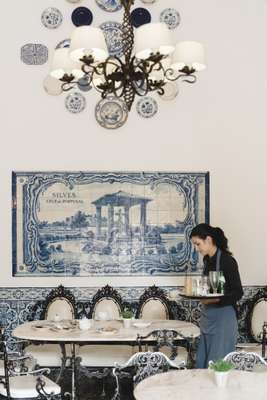
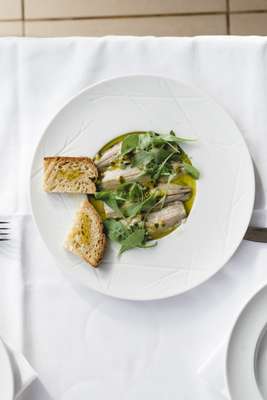

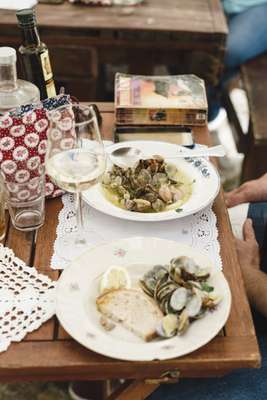


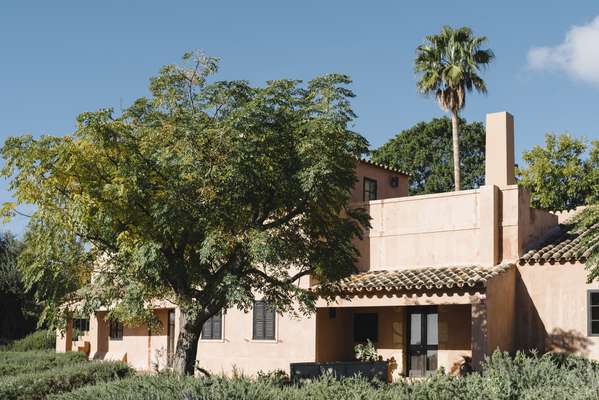
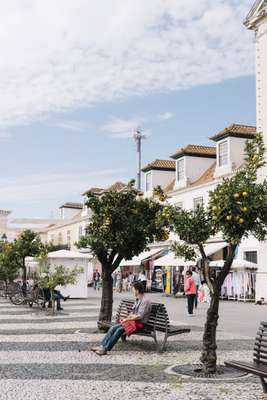
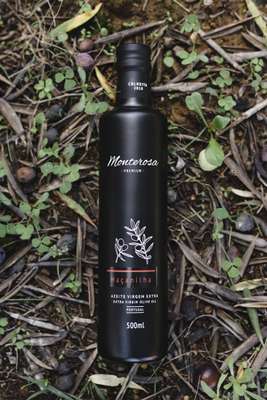

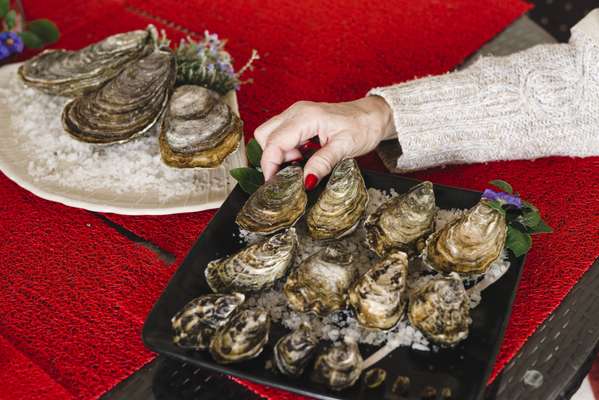
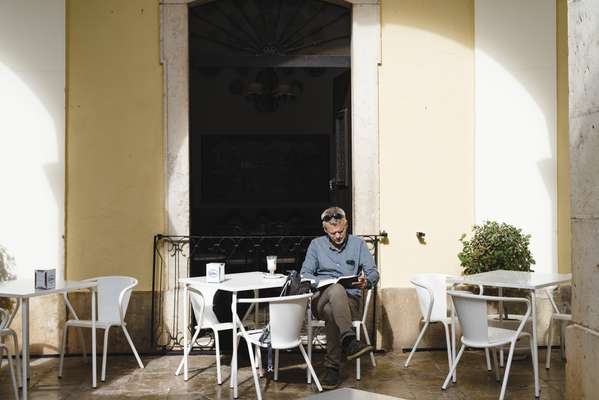
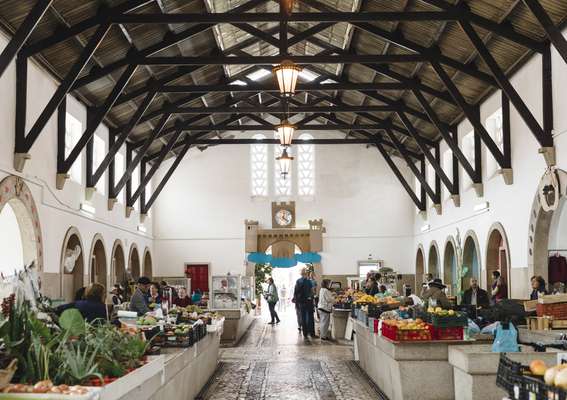
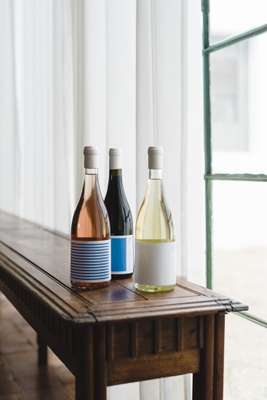
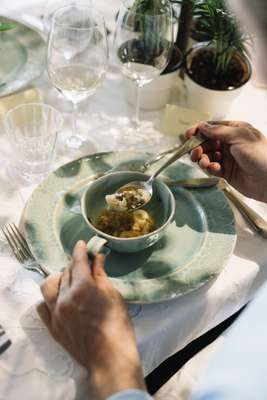
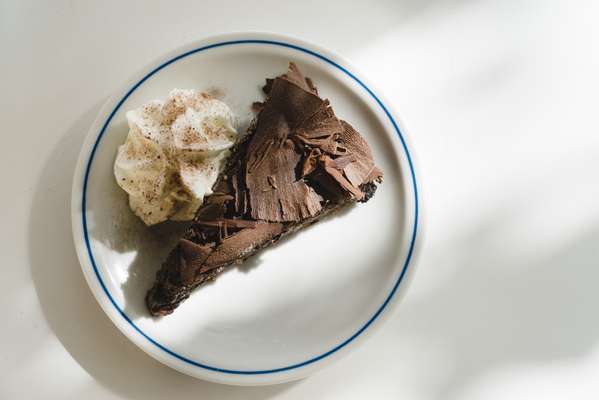

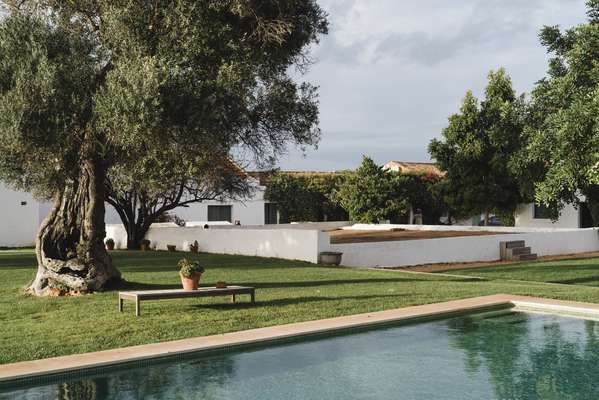
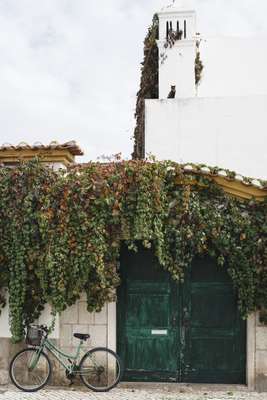
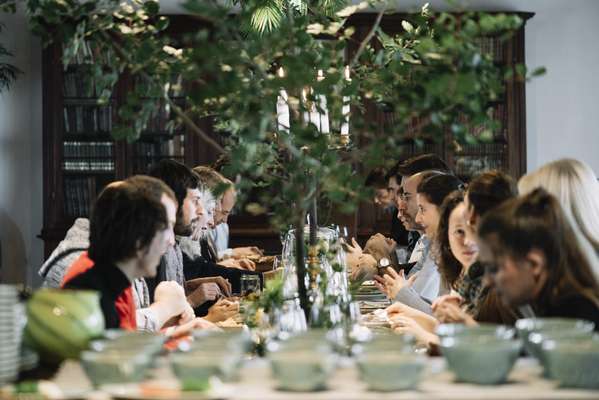

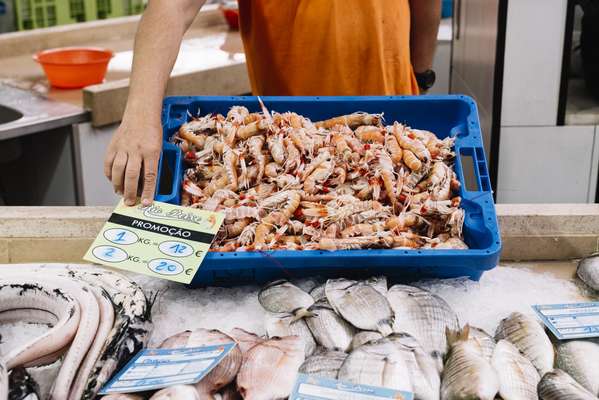
“To some people they are little more than ugly rocks but I love them,” says Margarida Pinhol. She launched the venture with daughter Cristina in 2010. The oysters can be bought to take away: they’re a snip at €12 per kg and as fresh as you’ll ever taste. We eat ours by the seaside as a mid-afternoon snack.
If shucking oysters isn’t your bag, visit Noélia’s restaurant in the neighbouring village of Cabanas, where specials of the day include a Moinho dos Ilhéus oyster-and-champagne risotto. Headed by chef Noélia Jerónimo, the restaurant has been running for more than 20 years. “I focus on seasonal ingredients from the Algarve,” says Jerónimo. “A lot of it is about the sea so I structure the menu around what the sea gives me; it’s something different every day.” This approach has won her a legion of fans and the restaurant is known by discerning diners across Portugal. Summer bookings need to be made months in advance but diners can join the queue for the walk-in tables (some wait for more than an hour). In the off-season there’s a far more pleasurable and relaxed experience to be had.
After our seaside sojourn we head inland, through the Castro Marim Nature Reserve, to Companhia das Culturas. Designed by architect Pedro Ressano Garcia, the 16-room hotel has a large living room in a converted olive press, complete with a wood-burning stove and welcoming afternoon tea and cake. In a seemingly knowing nod to the region’s mix of Moorish heritage and food, there’s also an elliptical hamam that’s made from butter-coloured marble. The hotel is beside a large farm that’s been run by the same family for the past seven generations. As well as olives, the farm boasts fig, apricot, orange and carob orchards, plus fields of broad beans and beehives. The hotel’s restaurant serves a breakfast of eggs, cheese and yoghurt, along with homemade jam and seasonal fruit juice made using the farm’s produce.
“The farm is the platform for the hotel,” says the co-founder, Eglantina Monteiro. “We try to use seasonal products of our own production. From the food to the toiletries and the architecture, it’s all a reflection of where we are.” It’s difficult to believe that this is still the Algarve.
Day two
Vila Real to Silves
The next morning we head to another seaside spot worth seeing: Vila Real de Santo António is our eastern-most stop. The town’s quaint cobbled squares are lined with orange trees; grapevines creep up garden walls. Even in winter the sun is warm as the masts of the sailboats in the marina sway in the breeze. On the other side of the river, just over an arched bridge, is Spain.
Vila Real’s market is focused on the piscine: the haul incudes large pink langoustines, pale white squid and silvery blue mackerel. Some vendors specialise: Francisca Peres Fernandes, for instance, sells only tuna. On her stall you’ll find every possible part of the fish: the skin and spine is used for making rich stock, while there are also large cherry-red steaks and muxama (dried tuna eaten thinly sliced, like a cured meat). Peres Fernandes can offer recipes for any cut and her customers include chefs from around the region as well as curious visitors.
The scent of the sea is still in our nostrils as we turn back inland and head west to a string of ancient towns in the shadow of Moorish fortresses. In Loulé we meet Joana Martins and Antonio Guerreiro, the two friends behind Eating Algarve Food Tours. The duo run a half-day food tour of Loulé, starting with a breakfast of traditional sweets and strong coffee and including a market visit, lunch and a tour of a few workshops. “We are both from the Algarve and we work with local producers and family-run businesses,” says Martins. “We want to help boost the economy and change perceptions of the Algarve by sharing our food, drink and cultural heritage with visitors.”
Monchique, a mountain town known for its natural spring spas and restaurants specialising in game and pork, is a 45-minute drive away. It’s worth a visit but we’re a little short on time. Instead we head straight to Silves, another Moorish town sitting in the lee of a red-stone fortress. Here we stop for a coffee and slice of cake at DaRosa café. Cook Dona Madalena has been making the pastries for sale here since the café’s doors swung open in 1974. “Foreign visitors tend to like the marzipan with chocolate best,” says Beatriz Viera from behind the counter. “But the local favourite is the Dom Rodrigo, which is egg yolk, sugar syrup and cinnamon. There’s also a very good sweet potato cake, made by a married couple who live near here.”
Some 10 minutes south of Silves is Morgado do Quintão, a bucolic estate of grapevines and ancient olive trees. Filipe Caldas de Vasconcellos’s family has been growing grapes in the region for generations but he has only been making his own wine for the past three years. Today Morgado do Quintão produces about 20,000 bottles a year.
Accounting for about 1 per cent of total Portuguese wine production, the Algarve is the country’s smallest wine-producing region but, as wine has been produced here since Phoenician times, it might well be the oldest. “Right up to the middle of the 20th century there was a lot of wine produced here but the growth of tourism changed that,” says Caldas de Vasconcellos, who sees wine-making as a way of reclaiming the region from the ground up. “Vineyards were sold for development or because the soil, which is very sandy, was used in construction. Production dropped significantly but in the last decade there’s been something of a revival.”
The estate has several small houses that Caldas de Vasconcellos lets to visitors who stumble across his peaceful retreat. He sometimes hosts lunches too. “I want to show off what is done well here and help change perceptions of the Algarve,” he says. “We have great food, good wine and beautiful countryside – along with our beaches.” Plenty more to tuck in to than bacon and eggs.
Algarve address book:
1. Eat: A Venda
60 Rua do Compromisso, 8000-078, Faro
2. Eat: Moinho dos Ilhéus
moinhodosilheus.com
3. Eat: Restaurante Noélia & Jerónimo
2 Avenida Ria Formosa, 8800-591, Cabanas
4. Eat: Café DaRosa
darosa.pt
5. Drink: Morgado do Quintão
531W, 8400-423, Lagoa
6. Buy: Monterosa Olive Oil
monterosa-oliveoil.com
7. Stay: Companhia das Culturas
companhiadasculturas.com
8. Visit: Eating Algarve Food Tours
eatingalgarvetours.com
9. How to get here: Touchdown at Faro international airport (there are plenty of flights) or take a train from Lisbon’s Oriente or Entrecampos stations (a journey of about 3.5 hours). Hire a car at the airport to explore further.


